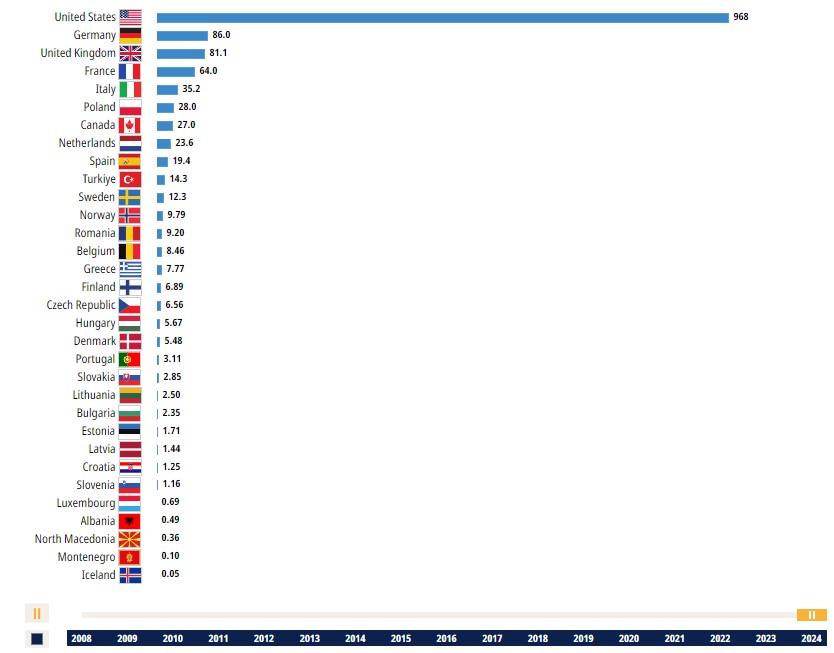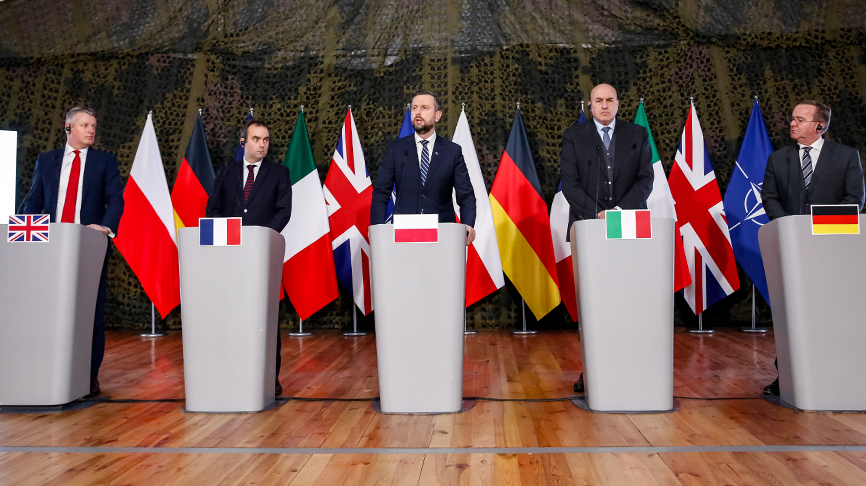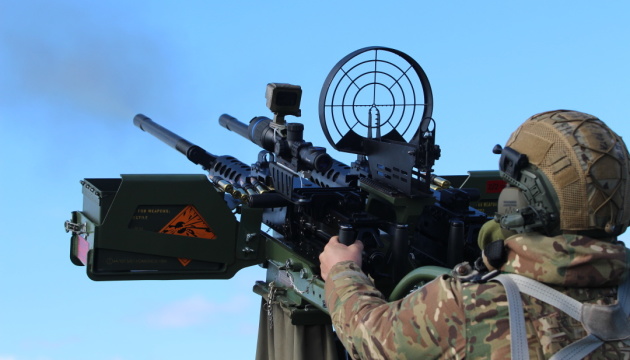The International Institute for Strategic Studies (IISS) in its annual report The Military Balance 2025 reports a 7.4% increase in global defense spending in 2024, rising to $2.46 trillion, compared to $2.24 trillion in 2023.
In 2024, global defense expenditure rose on average to 1.9% of GDP, up from 1.8% in 2023 and 1.6% in 2022.
The largest increase was seen in Russia, where defense spending surged by 41.9% to $145.9 billion, with defense expenditure accounting for 6.7% of Russia’s GDP. In 2025, this figure is expected to rise to 7.5%.

In Europe, defense spending rose by 11.7% to $457 billion in 2024. The growth is attributed to increased threats caused by the Russia-Ukraine war, as well as NATO members’ commitments to achieve defense spending of 2% of GDP. Germany saw the largest increase in 2024, raising its defense budget by 23.2%. In Poland and the Baltic states, defense budgets exceeded 3% of GDP, while countries like Spain and Italy continued to spend less than 2% of GDP on defense.
China's defense budget grew by 7.4%, well above the average increase of 3.9% in the rest of the Indo-Pacific region. However, due to higher growth in other regions, Asia’s share of global defense spending decreased to 21.7% in 2024, down from 25.9% in 2021.
The only region to see a decrease in defense spending was sub-Saharan Africa, where a 3.7% drop was recorded.
The main concerns in Europe remain the sustainability of recent increases, the feasibility of any further increases in light of President Trump’s desire to see spending rise, and the potential for weakened US defence commitments.
Globally, budgetary revisions are becoming increasingly common and more dramatic than in past annual budget cycles, with additional funding to address emerging security threats enacted over the course of the year. While this is a strong indicator of countries’ levels of concern, such measures also create volatility and a lack of transparency. This growth in spending, coupled with strategic and political pressure to continue increases for defence, comes at a time of high fiscal pressures, including mitigating climate change and responding to demographic shifts.





















